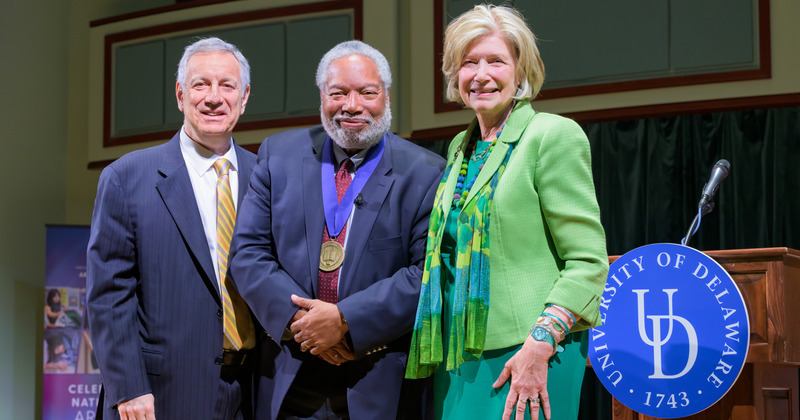
Helping a nation
In his 38 years at the Smithsonian, Bunch has seen changes in how government officials view the institution, which is about 62% federally funded, but he maintains that stories like the ones he shared, and the objects that represent those stories, help people understand what it means to be American. By providing diverse viewpoints, museums can help people understand that it’s okay to debate, to disagree and to have nuance.
“I think there is nothing more important than cultural institutions playing a crucial role during a time of partisanship and division. I would argue that the best cultural institutions are part of the glue that holds a country together, holds a community together,” he said.
“Part of the job of a place like the Smithsonian is, yes, to do the traditional work in art, science and history, to be that place of wonder and discovery. On the other hand, that’s not enough. You have to be a place for the greater good. You have to figure out if places like cultural institutions are trusted and use that trust to bring people together,” he continued.
Opportunity and understanding
Bunch said that the sense of discovery is the best part of working at the Smithsonian.
“Museums give you the best canvas in the world to paint, the best canvas to engage people, the best canvas to learn about yourself,” he said.
This is something he first experienced as a child traveling south from New Jersey to visit family in the 1960s. Bunch asked his father to stop at museums they passed in North Carolina, not understanding that segregation was still a barrier in the South.
On the drive home, Bunch’s father surprised him with a detour to Washington D.C. to visit the newly opened National Museum of History and Technology (now the National Museum of American History), telling young Bunch that this was where he could go to learn history without worrying about the color of his skin.
“I remember feeling that the Smithsonian gave me such a gift as a 10-year-old kid. The Smithsonian said, ‘Here. Here is knowledge, here’s an opportunity, here’s understanding.’ I owe the Smithsonian more than it owes me,” he said.
Local impact
During the question and answer session, sophomore honors history education major Alex Tóth asked Bunch for advice on garnering support for the local Newark Historical Society, where Tóth is a board member.
Bunch encouraged Tóth to identify those local leaders who support the museum, and identify and educate upcoming leaders on why it’s important to the community and why they should care.
“You cannot be a cultural leader without being political, without understanding that you have to build allies. It’s not enough to be smart, to be right, to be good. You have to also be political. Approach it not as an evil you have to do, but as part of the life,” Bunch said.
The message resonated, and the messenger inspired.
“When Dr. Bunch came to campus, the distance between Newark and Washington, between a history student and the Secretary of the Smithsonian Institution, went from almost insurmountable to a matter of a few feet,” Tóth said after the lecture.
“Lonnie Bunch reinforced the ‘why’ behind museums’ missions: we help people remember and understand, and that is a power and a responsibility that must be used wisely,” Tóth continued.
“By choosing what we display, we are essentially choosing whose stories get told. That’s never an easy choice to make, but I feel more confident thinking about that with such a strong example as Dr. Bunch’s to follow.”
Lonnie Bunch III was awarded the University’s Medal of Distinction from President Dennis Assanis and Interim Dean of the College of Arts and Sciences and Chair of the Department of Art Conservation Debra Hess Norris on behalf of the Board of Trustees.
The award recognizes individuals who have made humanitarian, cultural, intellectual or scientific contributions to society, who have achieved noteworthy success in their chosen professions, or who have given significant service to the University, community, state or region.
